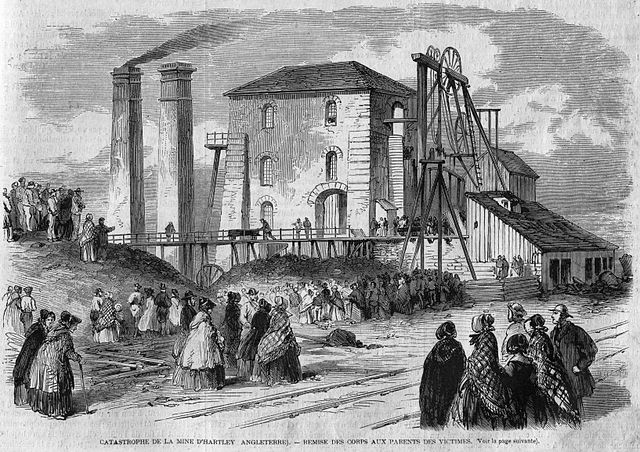Bronstein JM. The Hartley Colliery Disaster. Victorian Review; 40, 2014 pp. 9-13

-
Description
"....The hartley Colliery disaster of 1862 shocked Britain out of its mid-century equipoise, ripping the veil from the dangers faced by the British coal miner. As George Orwell would point out more than seventy years after the disaster, factories, home heating, and cooking fires depended on an endless supply of coal, but that coal was alienated from the point of production, and especially from those who produced it (35). In the age of telegraphic journalism, the nation was involved in the Hartley disaster in an unusually intense way, following the story through anxious hope and eventual disappointment over the six days during which the fate of those trapped underground remained unknown. This involvement culminated in both a large relief fund for the families of those killed and a surprisingly quick legislative remedy intended to prevent future disasters of the same kind. The Hartley Colliery, nine miles northeast of Newcastle, was prone to underground flooding. As a result, a forty-two-ton beam engine—the most powerful in England—had been installed to pump out water. The engine’s pumping spear and the cage that brought men in and out of the pit shared a single shaft, over which the beam of the engine towered. On 16 January 1862, during the underground shift change, the engine broke and collapsed. It fell into the pit, bringing along with it the pit’s wooden timbering and the brattice dividing the shaft. The falling beam crashed into the cage, which was bringing some of the men up from underground, thoroughly mangling it. The collision also sealed off the mine’s single shaft and blocked egress for over two hundred men and boys stranded underground: “at a single blow, escape, food, and air were simultaneously cut off” (“The Hartley Colliery Accident,” Civil Engineer and Architect’s Journal 62). Ultimately, three men would be rescued from the cage, but they were the only survivors....." -
Owner
Victorian Review -
Source
Local (Co-Curate) -
License
What does this mean? Unknown license check permission to reuse
-
Further information
Link: https://muse.jhu.edu/article/605601/pdf
Resource type: Text/Website
Added by: Simon Cotterill
Last modified: 8 years, 6 months ago
Viewed: 882 times
Picture Taken: Unknown -
Co-Curate tags






